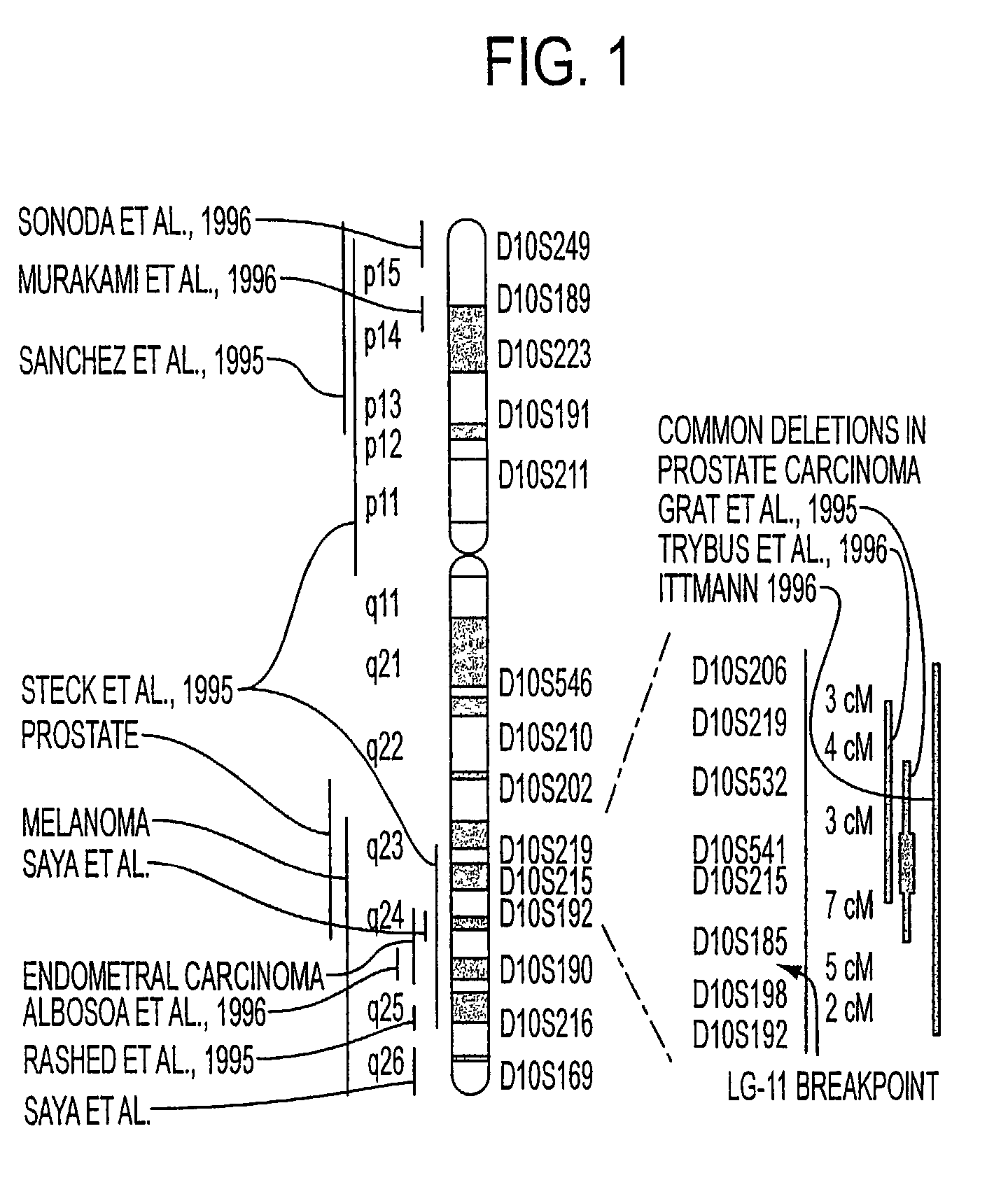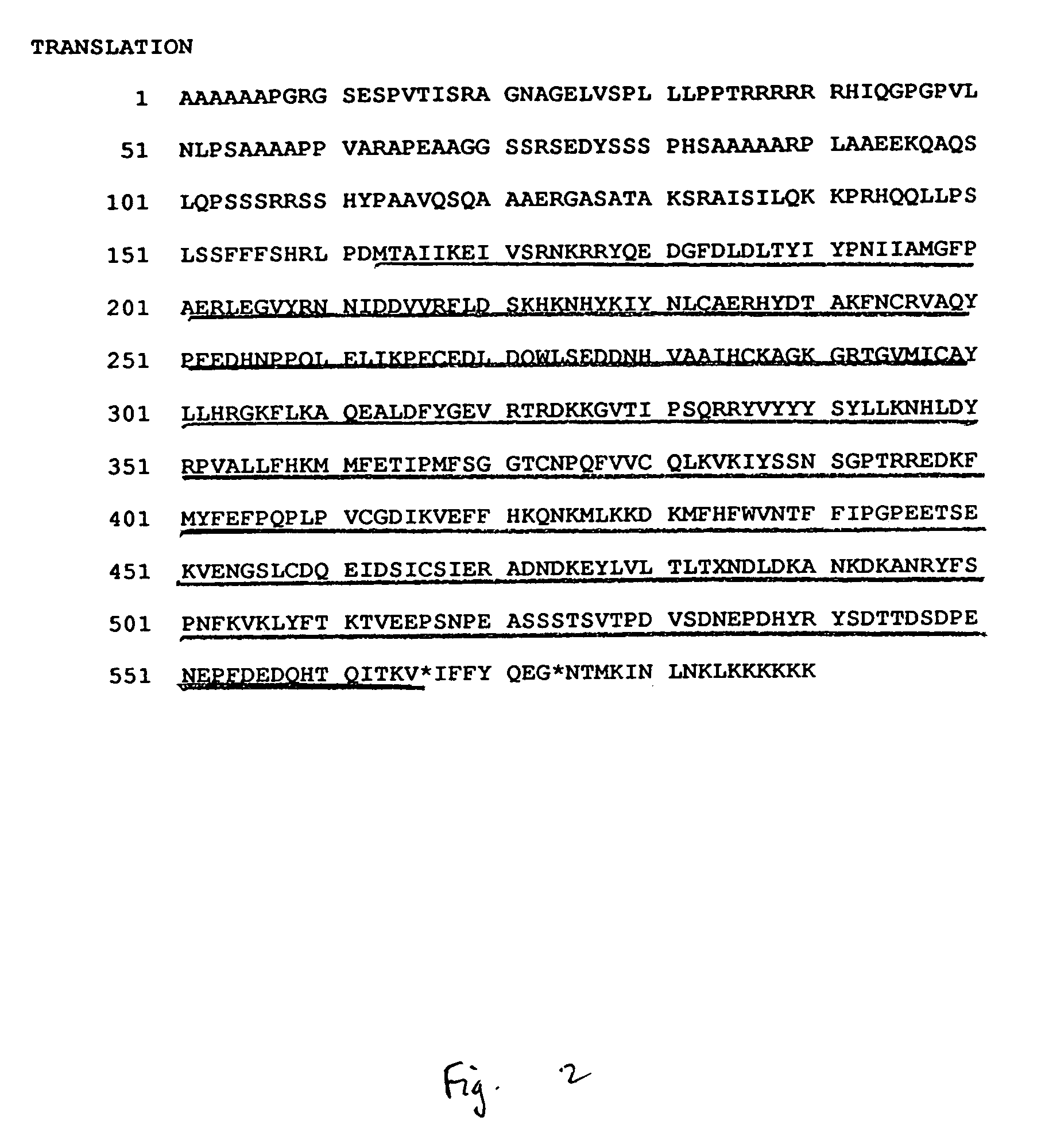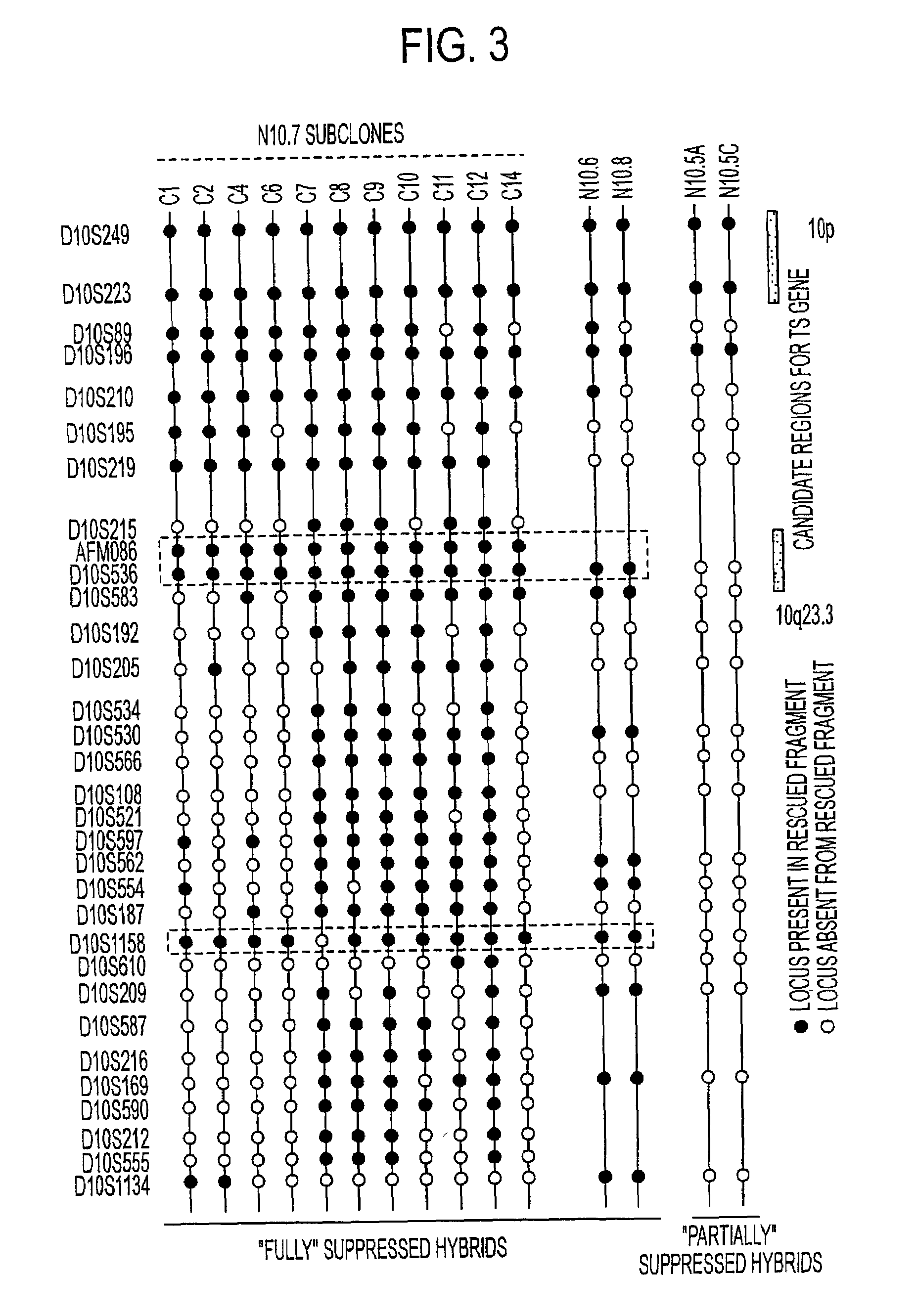Tumor suppressor designated TS10q23.3
a tumor suppressor and tumor technology, applied in the field of oncology, genetics and molecular biology, can solve the problems of insufficient number of treatable cancers, catastrophic cancer effects, and limited success in primary brain tumor treatmen
- Summary
- Abstract
- Description
- Claims
- Application Information
AI Technical Summary
Problems solved by technology
Method used
Image
Examples
example 1
Homozygous Deletions in Glioma Cell Lines
[0411]The inventors have examined DNA from a series of 21 glioma cell lines and primary cultures, along with normal cells, to identify homozygous deletions of genomic material on chromosome 10. Markers were chosen for their approximate location at or near previously implicated regions (FIG. 1). The cells analyzed were generated in the Department of Neuro-Oncology UTMDACC (LG11, EFC-2, PL-1, PC-1, JW, FG-2, FG-0, NG-1, PH-2, KE, PC-3, and D77), were commercially available (U138, A172, U373, U87, U251, U118, and T98G), or obtained from collaborators (13 wk astro, D54-MG). Markers were obtained from Research Genetics, Huntsville, Ala., or synthesized from reported sequence. Once cell line, EFC-2, revealed a large homozygous deletion associated with four markers surrounding D10S215 (FIG. 2). This deletion was also observed by FISH using YAC 746h6, which maps to the region. Three other cell lines (D-54, A172, and LG11) also demonstrated homozygous...
example 2
Retention of 10q Loci in Suppressed Hybrid Cells
[0412]The inventors' second strategy was to examine the regions of chromosome 10 that were retained in suppressed hybrid clones, but absent in the revertant clones. This analysis extended the inventors' previous study, showing the presence of two tumor suppressor loci on chromosome 10 and analyzing the regions that were retained. Hybrids retaining all or portions of 10q failed to grow in soft agarose and in nude mice (“fully” suppressed clones), while hybrid cells that lost the majority of the inserted chromosome 10q grew in soft agarose, but were nontumorigenic (“partially” suppressed clones; Steck et al., 1995; FIG. 3, right side). Original clones U251N10.6, N10.7, and N10.8 previously were shown to retain only fragments of 10q (Pershouse et al., 1993; Steck et al., 1995). Using additional informative microsatellite markers, three retained regions were identified in all three suppressed clones; a 22 cM region from D10S219 to D10S110,...
example 3
Allelic Deletion Analysis of 10q
[0415]An allelic deletion study was performed on DNA from a series of 53 glioma specimens and corresponding patient lymphocytes using microsatellite markers specific for chromosome 10. This study was undertaken to determine if our critical region also was involved in glioma specimens. Extensive deletions were observed in the majority of specimens derived from GBM, with 30 of 38 GBMs exhibiting deletion of most or all of chromosome 10 markers. Less extensive deletions were observed in the majority if specimens derived from anaplastic astrocytomas, while infrequent deletions were observed in astrocytomas and most oligodendrogliomas (FIG. 4 and data not shown). The majority of markers used in this analysis mapped to 10q23–26 (Gyapay et al., 1994). Similar to other studies, a common region of deletion could not be convincingly demonstrated, due to the large deletions in most GBM samples (Fults et al., 1993; Rasheed et al., 1995).
[0416]However, for the GBM...
PUM
 Login to View More
Login to View More Abstract
Description
Claims
Application Information
 Login to View More
Login to View More - R&D
- Intellectual Property
- Life Sciences
- Materials
- Tech Scout
- Unparalleled Data Quality
- Higher Quality Content
- 60% Fewer Hallucinations
Browse by: Latest US Patents, China's latest patents, Technical Efficacy Thesaurus, Application Domain, Technology Topic, Popular Technical Reports.
© 2025 PatSnap. All rights reserved.Legal|Privacy policy|Modern Slavery Act Transparency Statement|Sitemap|About US| Contact US: help@patsnap.com



